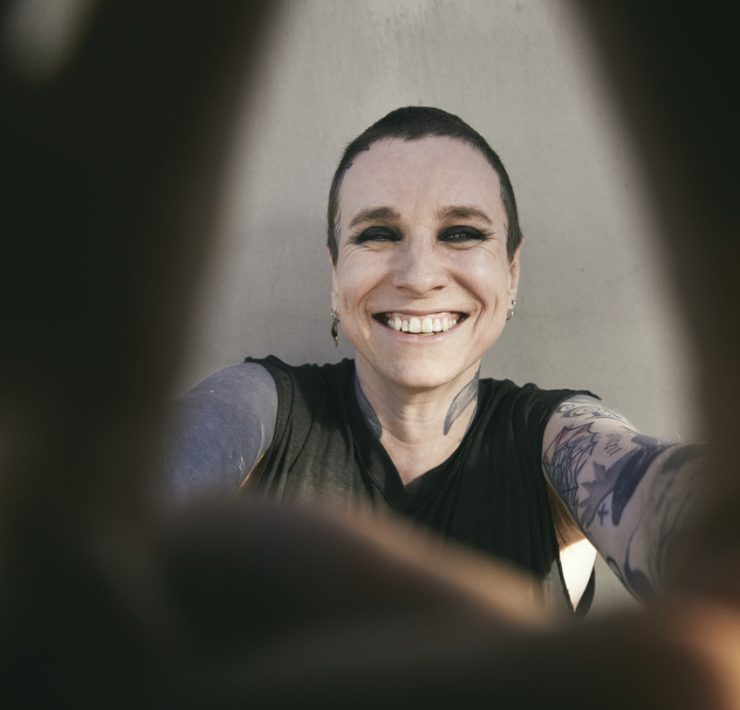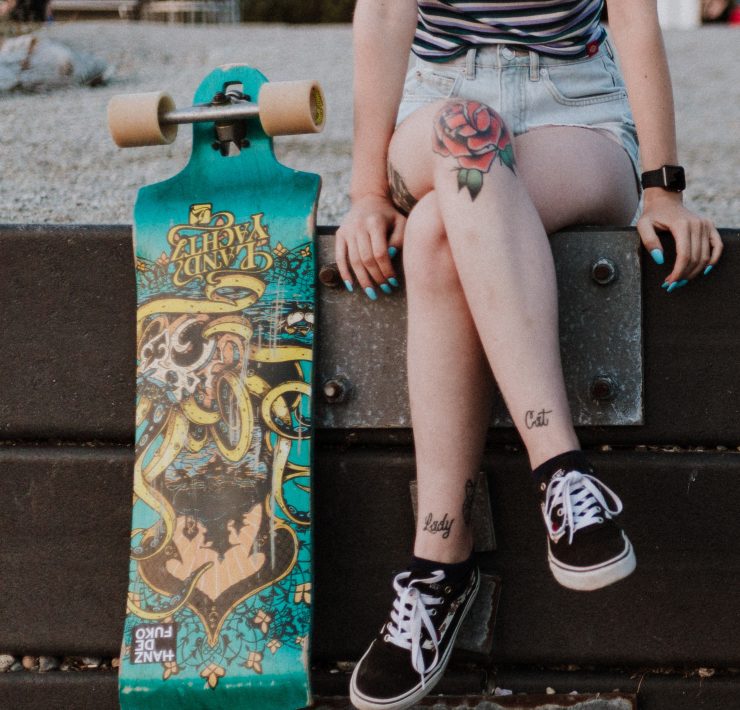Queercore: Decades of Challenging the Mainstream

As part of an “alternative culture,” LGBTQ people have often intersected with the forefront of other countercultures in society. The booming disco scene of the 70s gradually shifted to the emergence of Chicago house in the 80s, with LGBTQ people at the wheel, and it’s difficult to listen to the radio today without hearing some of these early influences.
Venturing back to that same era of “Dancing Queen” dominating the airwaves and clubs, another musical genre was also on the rise: punk rock. While the roots of classic punk are often traced back to England in the mid-to-late-70s, bands from years past like The Velvet Underground, The Ramones, and The New York Dolls set the stage for the birth of the new, IDGAF rebellion of punk.
Of course, we know the sound of harsh guitars and brash vocals as what defines the punk genre, but punk rock, then and now, is a subculture and way of living. In a time where music was largely romanticizing society or blindly optimistic, punks called bullsh*t. They sympathized with the working class and those oppressed by the greedy and powerful, rejecting the norm and embracing the avant-garde in fashion, media, and everyday life.
Punks themselves were a minority, deviants. As rock music photographer Bob Gruen said, “If you wanted to work in the music business, you didn’t go round admitting that you saw The New York Dolls. That was like admitting that you had friends who were homosexual. It was not popular in the mainstream.” A nod to this comparison, while punk culture was embracing ideas apart from the norm, it was still mostly fostered by straight people.
As punk music became more cemented in the mainstream in the 80s, the queer punks who embraced those same ideals the culture fostered and grew upon were still largely unseen in society as a whole, let alone the punk world, even though the LGBTQ community shared a lot of the unrest and urge to protest being shut down by the rest of the world.
Thus, queercore was born, a subculture of the punk scene that specifically looked at the experience of LGBTQ folks and rejected the heteronormativity and problematic sexual politics often seen in punk rock.
This was also in the midst of the HIV epidemic and the inaction of the Reagan administration, when LGBTQ people in the public eye hastily juggled being radical enough to get leaders to act while staying mainstream enough to garner allyship when they desperately needed it.
Just as LGBTQ people had to take it upon themselves to fight during this time, so did the queer punks who were so often shut out of their own community.
A pivotal shift in the empowerment of queercore and queer punks was the rise of queer zines, self-published to specifically tell the stories of queer punk rock artists and activists who often saw themselves fitting outside the box of what was considered the mainstream LGBTQ community.
Artists G.B. Jones and Vaginal Davis, among others, are often credited with jumpstarting the queercore movement with their zines, music, and art. Jones explored her lesbian identity and questioned the conventions of gender and sexuality in society, and Davis inserted her genderqueer, intersex, punk, black body into zines and performances, challenging the mainstream and LGBTQ culture to expand their idea of queer to span beyond cisgender and white.
In an interview about her zine Juvenile Delinquents/J.D.s, Jones said, “We were intent on creating a new subculture inclusive of other, pre-existing subcultures, but critical of them at the same time. We wanted to really bug the mainstream gays and lesbians while at the same time upsetting the punks as well, so we started the queercore movement.”
Davis spoke about her involvement in punk in the documentary This is Not a Dream, saying she often felt, “…too gay for the punk scene and too punk for the gay scene.” Her drag performances often had little or no flashy props or makeup, largely aiming to disrupt the the corporate-friendly drag of the time by challenging the slight representation in the LGBTQ community. She often interrogated the internalized homophobia, transphobia, and sexism inherent within the community.
These and other self-starters pushed punk rock to recognize that queers were innate within their culture, and by the 90s, the zines, art, and performances cultivated by the queercore community, just like that of the punk community as a whole decades prior, grew to new heights. J.D.s released its first compilation tape in 1990 featuring queercore bands from around the world. The first queer zine gathering was held in Chicago in 1991, and after the successful first run, it was followed by two more in the coming years.
The zine culture of queercore was booming and intersecting with the music of queer punks more than ever before, with the zine Outpunk creating a label in 1992, the first of its kind specifically for queercore artists. As the movement flourished, many queercore bands were not necessarily made up of all queer members but came to support the ethics behind the movement and embraced the community as part of the original essence of punk rock.
Today, queercore is often used as a term to span past just punk rock, covering a wide array of alternative music from pop-punk to ska to hardcore, goth, and industrial. Through history, what remains constant is the ability for queer folks to be able to hear themselves represented and empowered in music that previously bypassed their experiences.
Beyond the music, queercore politics continue to echo throughout the LGBTQ community. Before marriage equality, and even after, many have questioned whether our fight for rights as a community should focus on marriage with other unaddressed issues like gender equality, sex work, legislative discrimination, and violence still prevailing. During Pride season, we often queston if corporations or police belong at Pride with their history of oppression of LGBTQ people and people of color.
Queercore to this day urges us to recognize the LGBTQ community as vast and diverse and challenges us to look at LGBTQ folks beyond the heteronormative lens. Pioneers like Jones and Davis remind us even 30 years later that we must embrace the essence of punk by challenging everyone inside and outside of the LGBTQ community to continue the push for progress and equity in society.










